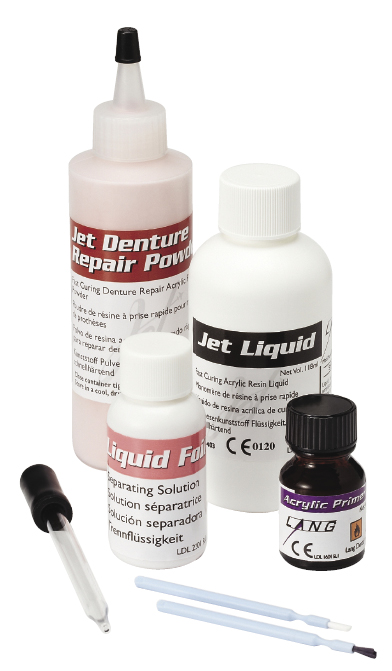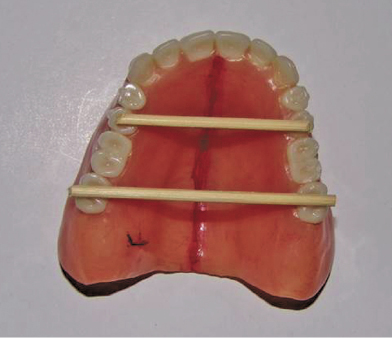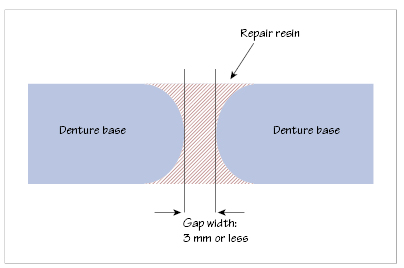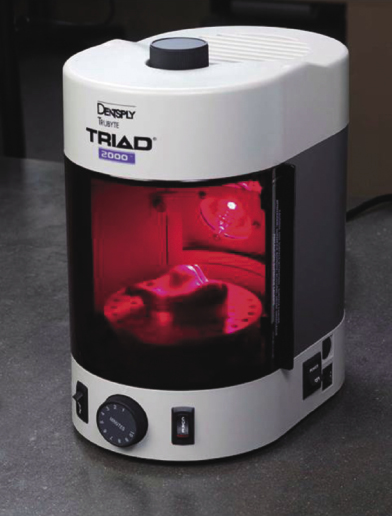22
Denture fracture and repair
Figure 22.1 Modern cold-cure denture repair material. (Courtesy of Lang Dental.)

Figure 22.2 Arrangement of a fractured denture for repair.

Figure 22.3 Fractured denture edges prepared with round profiles and a gap of 3 mm between broken edges for optimal repair.

Figure 22.4 Triad® custom curing unit for urethane dimethacrylate repair material. (Courtesy of Dentsply International.)

Dentures can fracture from a variety of causes, commonly through dropping onto a hard surface although other causes include failure of inherent defects from poor processing. Other factors predisposing complete dentures (CDs) to failure are a shallow palatal vault combined with severe flexure such as biting down onto a hard object or a deep incisal notch acting as a stress riser.
The commonest maxillary denture fractures occur at the midline from trauma (dropping) or arise from poor fit or occlusion problems. Although a repair can return the denture with a midline fracture to functionality, causative problems such as poor/>
Stay updated, free dental videos. Join our Telegram channel

VIDEdental - Online dental courses


